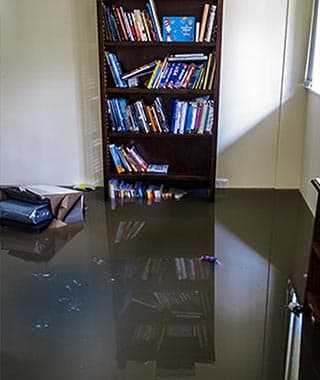What Does a Moisture Meter Measure?
Moisture meters are an essential tool for anyone working in the home restoration industry. They are used to measure moisture levels in various materials, including wood, concrete, and drywall. By measuring the moisture content of these materials, homeowners and professionals alike can detect and prevent water damage before it becomes a major problem.
What Does a Moisture Meter Measure?
A moisture meter measures the amount of water or moisture in a material. It is most often used to measure moisture in wood, drywall, and concrete, but can also be used to measure moisture levels in other materials, such as carpet and fabric.
Moisture meters are used to detect water damage and to determine if a material is suitable for use in a restoration project.
How Does a Moisture Meter Work?
Moisture meters use two electrodes to measure the electrical resistance of the material being tested. When the material is dry, the electrical resistance is low. As the material absorbs moisture, the electrical resistance increases.
The moisture meter then displays the moisture content of the material on a digital readout. Most moisture meters have adjustable settings, allowing the user to set the desired level of accuracy.
Benefits of Using a Moisture Meter
Using a moisture meter can help homeowners and professional restoration experts to detect water damage in its earliest stages. This can prevent costly repairs in the future and can be a valuable tool in helping to diagnose the cause of a water damage problem.
Here are some of the benefits of using a moisture meter:
- Quickly and accurately measure moisture levels in building materials
- Detect water damage in its early stages
- Help diagnose the cause of a water damage problem
- Prevent costly repairs in the future
- Improve safety by detecting mold and mildew
- Help to determine the suitability of materials for use in a restoration project
Types of Moisture Meters
There are two main types of moisture meters: pin-type meters and non-invasive meters. Pin-type meters use two electrodes that penetrate the material being tested. Non-invasive meters measure the surface of the material without penetrating it.
Pin-type meters are the more accurate of the two types, as they measure the moisture content of the material from the inside out. Non-invasive meters are less accurate, but they are much faster and easier to use.
When to Use a Moisture Meter
Any competent water restoration company will use moisture meters whenever there is a potential for water damage. This includes during home inspections, renovation projects, or when a homeowner is concerned about water damage in their home.
Moisture meters can also be used to determine the suitability of a material for use in a restoration project. For example, if a homeowner is installing a new floor, they can use a moisture meter to ensure that the subfloor is dry and suitable for the new flooring.
Conclusion
In reality, a moisture meter is an essential tool for anyone working in the home restoration industry. It can help to detect water damage in its early stages, preventing costly repairs in the future.
Moisture meters can also be used to determine the suitability of materials for use in a restoration project. There are two main types of moisture meters: pin-type meters and non-invasive meters. Moisture meters should be used whenever there is a potential for water damage.










